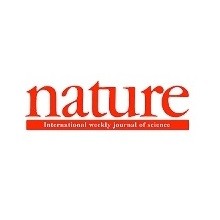
مقایسه تغییرات عروق ریز و عروق بزرگ در پرفشاری اولیه و پرفشاری ناشی از آلدوسترونیسم
یک مطالعهی مشاهدهای شاهد- موردی به منظور ارزیابی تغییرات عروق ریز و عروق بزرگ در بیماران مبتلا به پرفشاری ناشی از آلدوسترونیسم اولیه (PA)، پرفشاری اولیه (EH) و افراد سالم انجام شد. مقیاس سختی شریان از جمله شاخص تقویت (AIx) و سرعت موج پالسی (PWV) با استفاده از یک سیستم آرتریوگرافی TensioClinic بررسی شد. با استفاده از یک آنالایزر عروق شبکیه (RVA) و یک دوربین غیر میدریاتیک (Topcon-TRC-NV2000) از سیستم گردش خون کوچک شبکیهی چشم تصویربرداری شد. نرمافزار IMEDOS قطر شریان شبکیه (RAD)، قطر ورید شبکیه (RVD) و نسبت شریان به ورید (AVR) را در عروقی که از دیسک نوری خارج میشوند؛ آنالیز کرد. 30، 39 و 35 بیمار به ترتیب در گروه PA، EH و شاهد قرار گرفتند. گروه PA سرعت موج پالس بالاتری را در مقایسه با گروه شاهد نشان داد. میانگین شاخص تقویت شریان بازویی و آئورت، بین دو گروه تفاوت معناداری نداشت. در گروه PA، میانگین مقادیر قطر ورید شبکیه و نسبت شریان به ورید نسبت به گروه EH و شاهد، به طور معناداری پایینتر بود؛ در حالی که این پارامترها بین گروههای EH و شاهد با یکدیگر تفاوتی نداشتند. در نتیجه، به نظر میرسد نسبت شریان به ورید در گروه PA نسبت به گروه EH به طور معناداری تغییر کرده و میتواند شاخص اولیه و قابلاعتمادتری برای بازسازی عروق ریز باشد.
آلدوسترونیسم اولیه (PA) علت شایع پرفشاری شریانی است و نشاندهندهی فراوانترین نوع پرفشاری ثانویه میباشد. با توجه به اثرات مستقل از فشار آلدوسترون که بر قلب، شریان کاروتید و کلیهها تاثیر میگذارند؛ آلدوسترونیسم اولیه در مقایسه با پرفشاری اولیه (EH) با بروز بالاتر عوارض قلبی عروقی همراه است.
مطالعات اخیر که بر روی بیماران مبتلا به آلدوسترونیسم اولیه انجام شده است، به افزایش تجمع کلاژن به خصوص کلاژن نوع 3، حتی در شریانها و شریانچههای کوچک، در مقایسه با افرادی با پرفشاری اولیه و فشار خون عادی اشاره کردهاند. این تغییرات در ماتریکس خارج سلولی میتوانند ساختار عروق ریز را به شدت تغییر دهند و نقش مهمی در پیشرفت فیبروز قلبی عروقی و افزایش متعاقب استحکام این ساختارها دارند. مکانیسم اتیوپاتوژنیک که توسط آن آلدوسترون قادر به ایجاد چنین تغییراتی است؛ هنوز به طور کامل شناخته نشده است؛ با این وجود، به این موضوع پی برده شد که آلدوسترون به طور قابلتوجهی به تجمع فیبرهای کلاژن و فاکتورهای رشد مختلف در دیوارهی عروق در بیماران مبتلا به آلدوسترونیسم اولیه کمک میکند.
Case-control observational study to evaluate the microvascular and macrovascular changes in patients with hypertension secondary to primary aldosteronism (PA), essential hypertension (EH) and healthy subjects. Measurements of arterial stiffness including augmentation index (AIx) and pulse wave velocity (PWV) were assessed using a TensioClinic arteriograph system. Retinal microcirculation was imaged by a Retinal Vessel Analyzer (RVA) and a non-midriatic camera (Topcon-TRC-NV2000). IMEDOS software analyzed the retinal artery diameter (RAD), retinal vein diameters (RVD) and arteriole-to-venule ratio (AVR) of the vessels coming off the optic disc. Thirty, 39 and 35 patients were included in the PA, EH and control group, respectively. The PA group showed higher PWV values compared only with the control group. The mean brachial and aortic AIx values did not show significant difference between groups. In the PA group, the mean RVD and AVR values were significantly lower than in the EH and control groups, whereas the parameters did not differ between the EH and control groups. In conclusion, AVR appears significantly modified in the PA group compared with the EH group and could represent an early and more reliable indicator of microvascular remodeling.
Primary aldosteronism (PA) is a common cause of arterial hypertension and represents the most frequent form of secondary hypertension1 . PA has been associated with a higher incidence of cardiovascular events than essential hypertension (EH), due to aldosterone pressure-independent effects, with marked target organ damage affecting the heart, carotid artery and kidneys2 .
Recent studies of patients affected by PA have demonstrated an increased accumulation of collagen, especially type III, even in small arteries and arterioles, compared with normotensive and essential hypertensive subjects3, 4 . These changes in extracellular matrix are able to modify profoundly the microvascular structure and play an important role in the development of cardiovascular fibrosis and the consequent increase in the rigidity of such structures. The etiopathogenetic mechanism by which aldosterone is able to effect such changes has not yet been completely identified, although it is known that aldosterone helps substantially in the accumulation of different collagen fibers and growth factors in vascular walls in patients with PA4, 5
نتایج
بحث
روش ها
Results
Discussion
Methods
- ترجمه فارسی مقاله با فرمت ورد (word) با قابلیت ویرایش، بدون آرم سایت ای ترجمه
- ترجمه فارسی مقاله با فرمت pdf، بدون آرم سایت ای ترجمه
